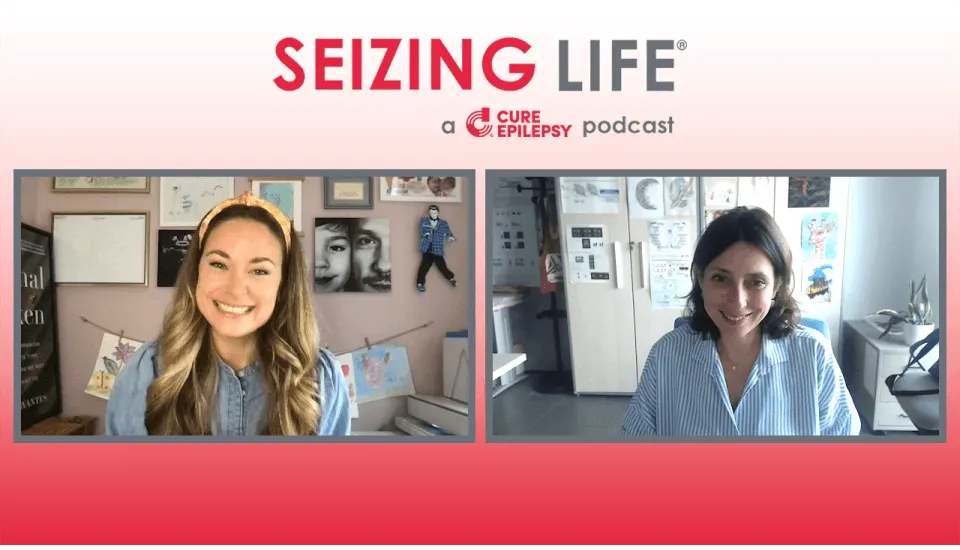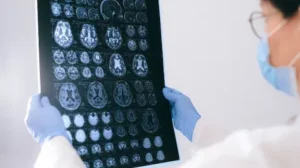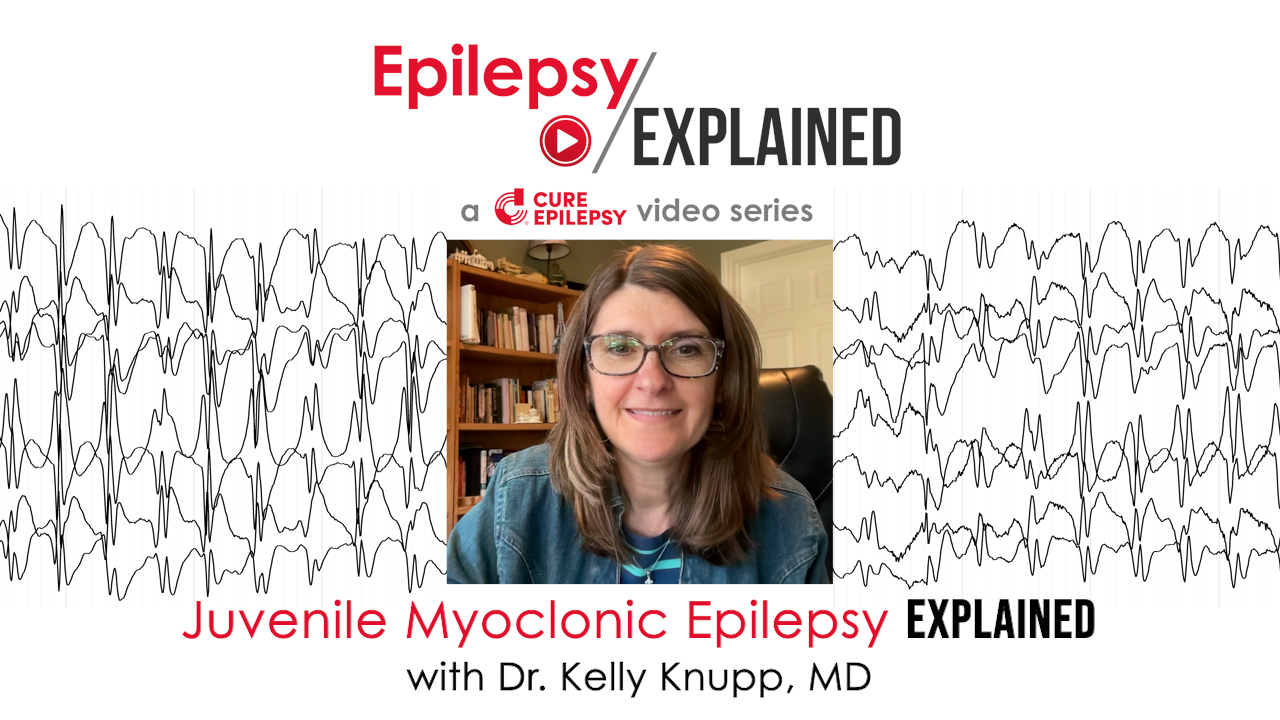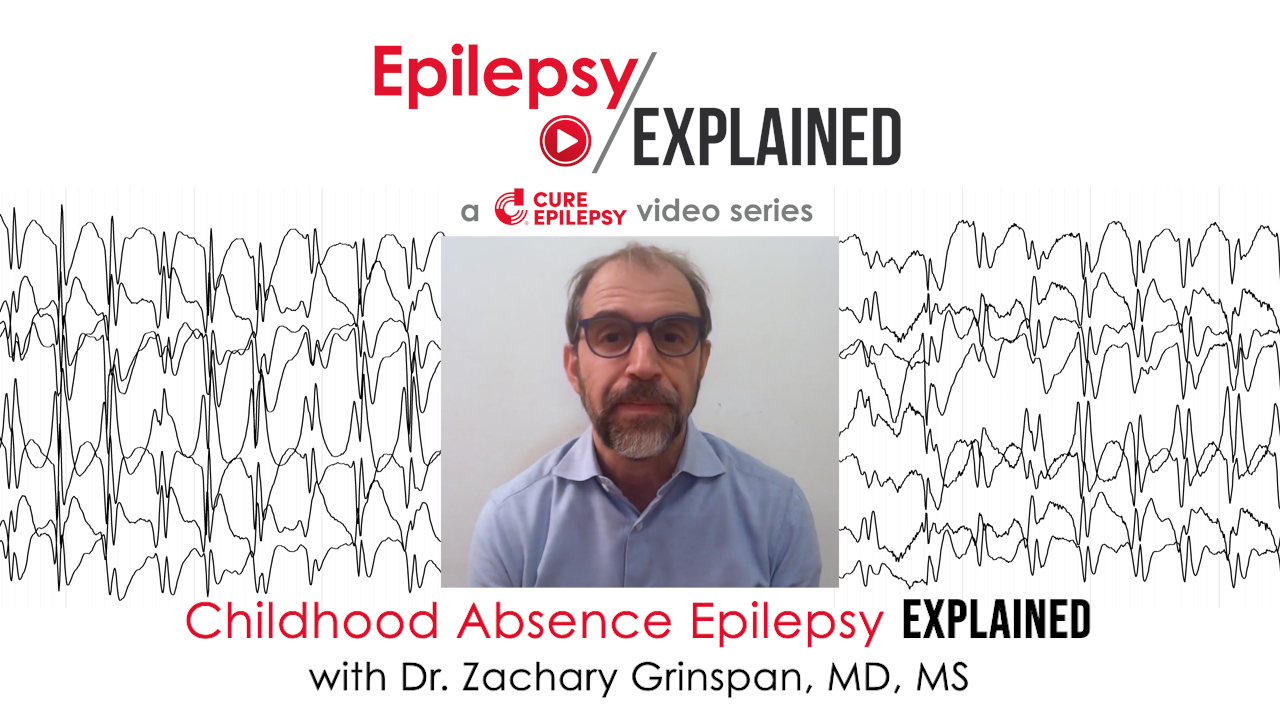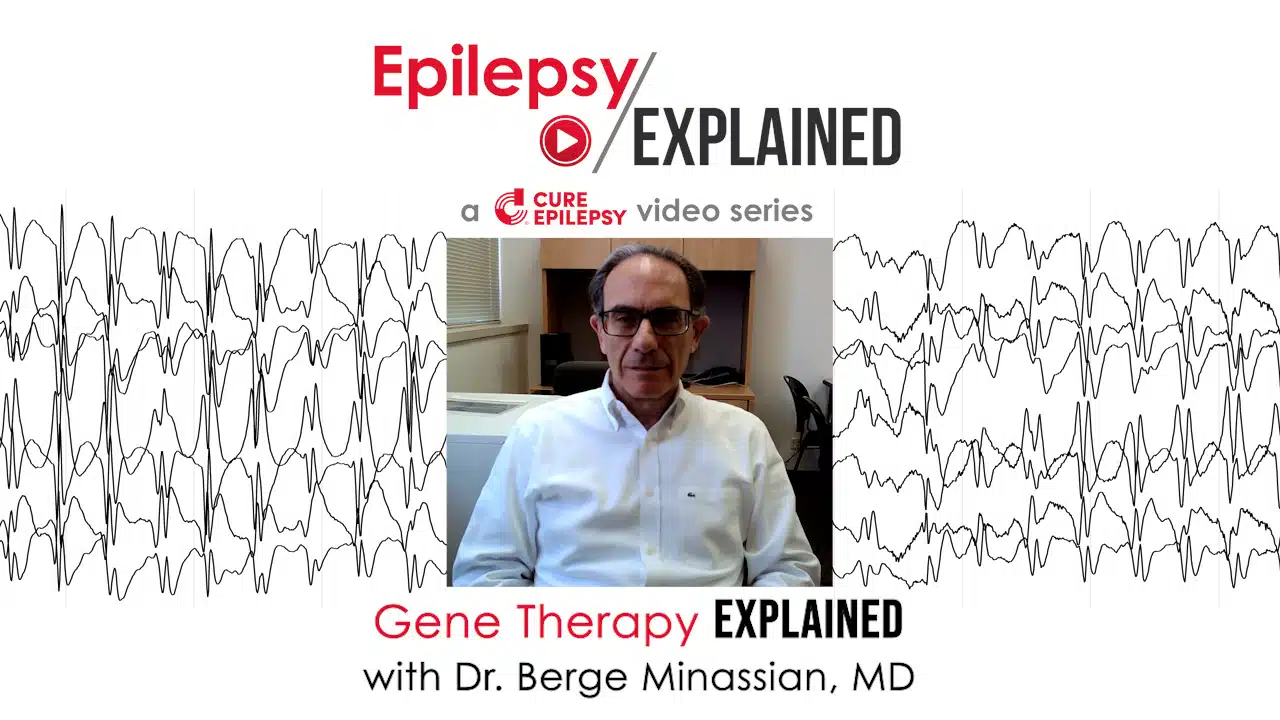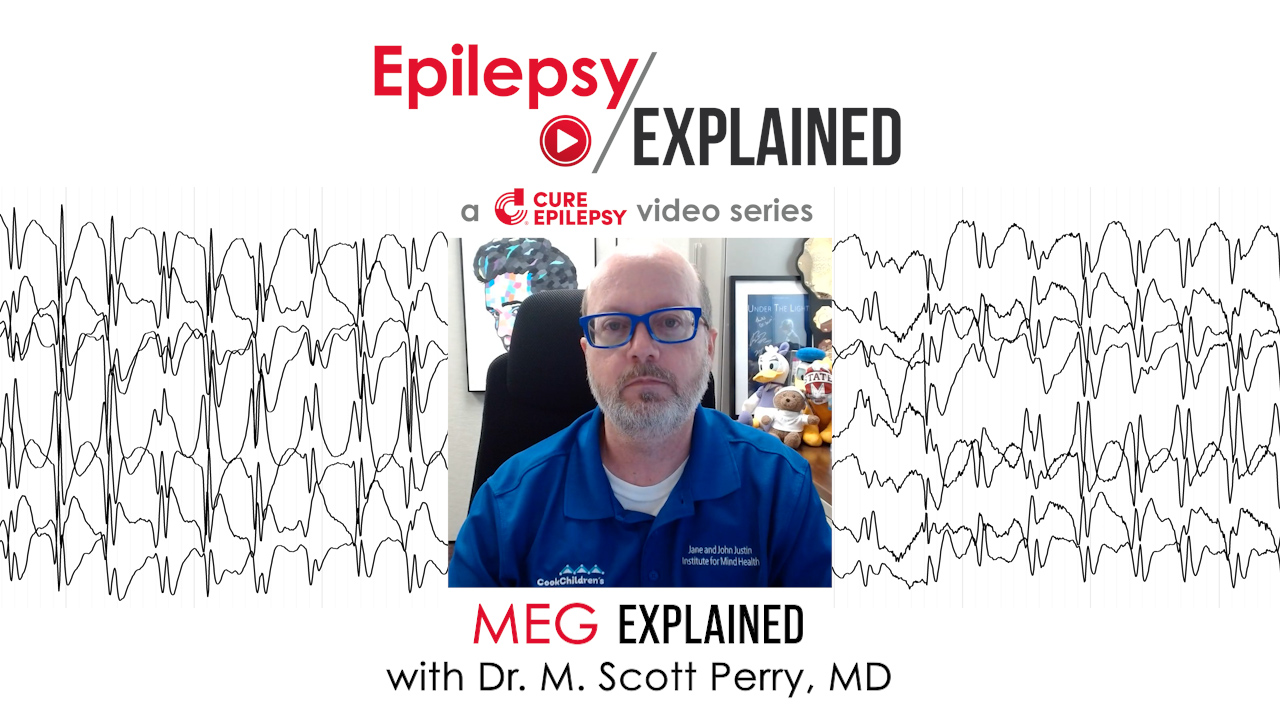Juvenile Myoclonic Epilepsy Explained: Diagnosis, Treatments, and Long-Term Prognosis
This month on Epilepsy Explained Dr. Kelly Knupp, MD, answers your questions about Juvenile Myoclonic Epilepsy, or JME. Dr. Knupp, Associate Professor of Pediatrics and Neurology at University of Colorado Anschutz and Pediatric Epileptologist at Children’s Hospital of Colorado, explains what Juvenile Myoclonic Epilepsy is, how seizures present in JME, who is most often impacted by JME, and how it is diagnosed and treated.
In Juvenile Myoclonic Epilepsy Explained, Dr. Knupp answers the following questions.
0:00 Intro
0:17 What is Juvenile Myoclonic Epilepsy and how do seizures present in JME?
1:27 How is Juvenile Myoclonic Epilepsy diagnosed and who is most often diagnosed with it?
3:10 Do we know what causes Juvenile Myoclonic Epilepsy?
4:50 What are the recommended treatments for JME and how effective are they?
6:51 Are there particular seizure triggers for people living with JME?
8:39 What is the long-term prognosis for a person diagnosed with JME?
Look for new episodes of Epilepsy Explained on the third Wednesday of every month here on our website and on CURE Epilepsy’s YouTube Channel.
Submit questions for future episodes of Epilepsy Explained here.
Episode Transcript
What is Juvenile Myoclonic Epilepsy and how do seizures present in JME?
Dr. Kelly Knupp:
Juvenile myoclonic epilepsy is a generalized epilepsy that we usually see presenting in the teenage years, usually in early adolescence. It has two characteristic seizure types, myoclonic seizures and generalized tonic-clonic seizures, both of which we consider generalized. Often the myoclonic seizures are the first presentation. And myoclonic seizures are a quick jerk, could be of an arm, a leg, both arms, both legs. It usually isn’t something that people think of as a seizure, and so may often go undiagnosed until we see a generalized tonic-clonic seizure. The myoclonic seizures are characteristically worse in the morning and then improve throughout the day, and so what families may notice is a clumsiness in the morning with dropping your hairdryer, dropping your comb, dropping your spoons, filling your milk when you’re pouring breakfast. So it isn’t always recognized as a seizure until we see a more clear generalized tonic-clonic seizure, which of course is very obvious and concerning to the family.
How is Juvenile Myoclonic Epilepsy diagnosed and who is most often diagnosed with it?
Dr. Kelly Knupp:
Juvenile myoclonic epilepsy is most often diagnosed in teenagers, usually young teenagers, and the typical presentation is with a first time generalized tonic-clonic seizure. Oftentimes this will happen in the morning hours shortly after waking up, and so as an epileptologist, whenever I get a phone call around 6:30 or seven o’clock in the morning about a child presenting with a first generalized tonic-clonic seizure, this is often my first diagnosis that I’m thinking, “Boy, I wonder if this is going to be juvenile myoclonic epilepsy?”
Whenever we see these patients, we actually have to inquire about the myoclonic seizures. Myoclonic seizures are not often recognized as seizures by either the patient or their family, but with questioning about, “Had they been clumsy in the morning, dropping objects,” we can often elicit that history and then recognize that we are seeing both seizure types, generalized tonic-clonic seizures, as well as myoclonic seizures.
These patients do sometimes have absence seizures as well, which are brief staring spells, and that is also something that we would ask about both at the time of presentation as well as throughout the course of treatment. That diagnosis sometimes is only present in about 50% of patients, so it’s not a common feature that we see. These patients also should have an EEG, a very characteristic EEG finding with generalized spike and wave that we see in these patients, and so that helps confirm the diagnosis.
Do we know what causes Juvenile Myoclonic Epilepsy?
Dr. Kelly Knupp:
That’s a great question, what causes juvenile myoclonic epilepsy? We have a lot of evidence suggesting that this is probably a genetic disorder because we see this disorder run in families, and it may not necessarily be a direct relative who has it, so it may not be a sibling or a parent. It may be a cousin or an aunt and uncle, but we definitely see a very strong family history of either juvenile myoclonic epilepsy or other types of generalized epilepsies that usually present in childhood.
Despite that, we really don’t have good genes that have been identified, and so we have other disorders where we see a presentation and we know, “Oh, you must have X gene.” And that is not the case in juvenile myoclonic epilepsy. We do typically do a lot of genetic testing in these patients, but we often don’t find an answer related to that. So it’s a little bit frustrating that we have these clear family histories of people really suggesting that this is genetic, but we’re not able to identify a single gene, that probably suggests that it is many genes that cause this, and perhaps it is the sum of variants in a number of genes that leads to this diagnosis. Something that’s incredibly frustrating to families and us as providers because we really would like to know why, why did this happen? Because once we understand why we may actually be able to do even more than anti-seizure medication to try and manage this or prevent it.
What are the recommended treatments for JME and how effective are they?
Dr. Kelly Knupp:
That’s a great question, and this is something that requires a lot of partnership with families to make good choices because there are a number of options that are available. One of our most effective options is a medicine called valproic acid, but unfortunately that’s one of our treatments that actually has the most amount of side effects. In fact, in some countries, use of valproic acid is actively discouraged. The side effects include things like an impact on fertility, polycystic ovary disease, and increased risk if somebody were to become pregnant, as well as things like weight gain and impacts on bone health. So this is a medication that while it is very effective for these patients, carries significant risk associated with it and is really something that requires ongoing conversation.
So oftentimes before using that medication, we will opt to use other medications and fortunately have a number of options available. We use medications such as lamotrigine, levetiracetam. Sometimes we will use topiramate or zonisamide, and some will also opt for devices or diet therapy. So from a device perspective, we can use a VNS, a Vagal Nerve Stimulator, and then ketogenic diet, or one of its perhaps better tolerated variants, the modified Atkins diet in adolescents will be used. But if these other treatment options aren’t working, it is very reasonable to circle back and discuss the use of valproic acid, but making sure that families understand the risks and side effects associated with it before they make that choice.
Overall, the vast majority of patients with JME actually respond fairly well to medication. It is one of our epilepsy syndromes that tends to respond better to medication than other of our epilepsy syndromes. In fact, there’s some series reporting up to 85% of people responding to medication, which is really great to see.
Are there particular seizure triggers for people living with JME?
Dr. Kelly Knupp:
There are triggers for seizures that are somewhat unique to juvenile myoclonic epilepsy. We may see these in some other epilepsy syndromes, but particularly important for patients with JME to know these. So in general, sleep deprivation can provoke seizures in many people with epilepsy, but people with JME may be a little bit more sensitive to that. So particularly for our young teenagers who may be doing things like sleepovers or stayovers, as one of my patients tells me they prefer to call them, it’s really important that they try to get sleep when they do those things, that if they know they’re going to stay up late to make a plan to be able to sleep in early the next day so that they can catch up on their sleep. So sleep deprivation is a common trigger.
Flashing lights can be a common trigger for these patients, and so disco balls or video games that have flashing lights could pose some hazard, although generally we don’t see the fast flashing with those types of activities anymore, but it still occasionally happens. Flashing lights sometimes can present in places where you don’t expect them. So driving down a tree-lined street either at dawn or dusk where the light is coming through the trees can actually simulate flashing lights, and so that may be something that people have to be particularly cautious about.
Alcohol is another common trigger for people with JME. This is a type of epilepsy where drinking alcohol can actually lead to a seizure, and so particularly for our adolescents, we need to make sure that they know these risks before they engage in some of these dangerous activities that may be a little bit riskier for them than it would be for the typical adolescent.
What is the long-term prognosis for a person diagnosed with JME?
Dr. Kelly Knupp:
Well, the good news is that most people with JME tend to respond well to medications, so that is a good thing. So we tend to see good response to medication. It tends to not impact thinking, although there is some data out there that there may be a greater risk of inattention or ADHD associated with having a diagnosis of JME. Unfortunately, JME does tend to be a lifelong diagnosis, and so whenever we make this diagnosis, it is not one of our epilepsies that we think of people outgrowing as they get older. This is usually a diagnosis where we recommend ongoing treatment throughout the lifespan.
I will say that this hasn’t been as well studied as we would like it to be, and there are case reports of people who have been able to stop their medications in their 30s and 40s and not have return of seizures, which is kind of exciting, but it is a really tricky time to stop your medications because you are living life and you are driving and may have a family to care for and a job to go to and to be able to give up driving for a period of six months while you come off your medications to see if that’s successful or not is a really challenging ask for a lot of people. So overall, we see good response to medication, but unfortunately this is a type of epilepsy where we recommend medication throughout the lifespan.


